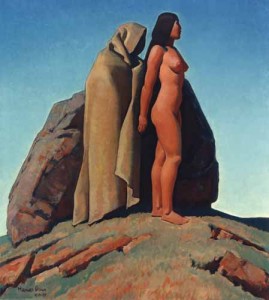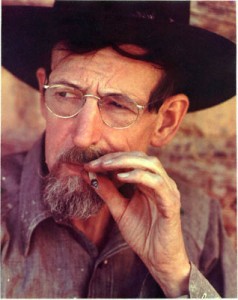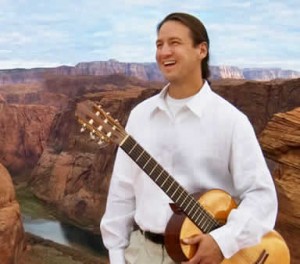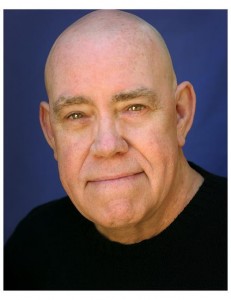A portrait in words, visuals and music of Western artist Maynard Dixon
Written by Harry Clark
Music: Original score by Brad Richter for guitar and cello
Videographer: Daniel Foster
1M: Maynard Dixon
2M: guitar and cello
Visuals: Powerpoint
At last,
I shall give myself to the desert again,
that I, in its golden dust,
may be blown from a barren peak
broadcast over the sun-lands.
If you should desire some news of me,
go ask the little horned toad whose home is the dust,
or seek it among the fragrant sage,
or question the mountain juniper,
and, by their silence,
They will truly inform you.
“At Last,” Maynard Dixon
As part of the festivities surrounding the Tucson Museum of Art’s adventuresome opening, Maynard Dixon’s Arizona, I was honored for the commission to create a portrait on this exemplary Western artist, but worried about the various permissions for use of visuals in the work. This can be an expensive and lengthy proposition, and a portrait of a visual artist without the visuals is the equivalent of a portrait of Schubert without song. I need not have worried.
With the guidance of Thomas Smith, Curator of Western Art at TMA, and Tucson’s Mark Sublette, whose unsurpassed collection of Dixon ephemera was made freely available to me, I was home free. Add to this first-time collaborations with composer and guitarist Brad Richter, videographer Daniel Foster and director Troy Hollar—Dixon was in fine hands.
The key in revealing Dixon, the quintessential restless, reticent Western man, was in his poems. He wrote lots of them, many expressing sentiments only his paintings speak of. The title of the work came from one of his finest efforts.
The last piece of this lovely puzzle was solved with the great voice and spirit of John Schuck. Fabulous. The performances were offered outdoors in the courtyard of the museum and even the unscripted train whistle of the nearby railroad station added an authenticity of a vanishing West that Dixon was so intent in capturing on canvas.




